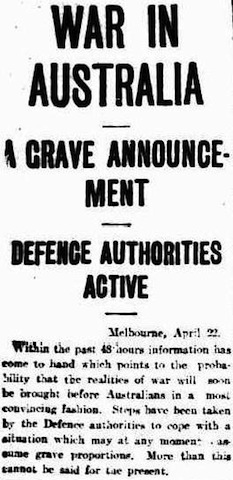Suspicious minds
I’ve recently begun some research at the National Archives of Australia (the Melbourne reading room of which is conveniently only about half a kilometre from my house) into the 1918 mystery aeroplane scare. It’s always exciting to get to work on a new set of primary sources; and this is my first time working in […]




